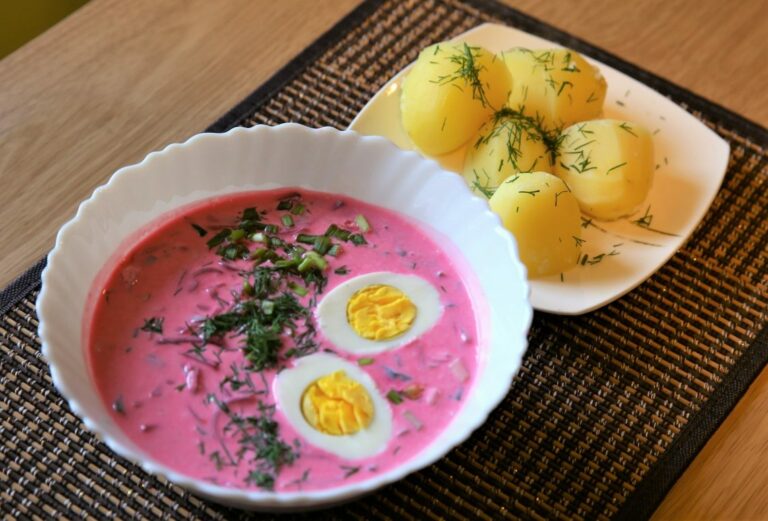Introduction: Exploring Lithuanian Arts and Crafts in Cuisine
Lithuania is a country with a rich cultural heritage, which includes a plethora of traditional arts and crafts. These artistic traditions have been passed down through generations and are still celebrated today. An interesting aspect of Lithuanian culture is the influence of this art and craft heritage on their cuisine. Lithuanian cuisine is known for its hearty and filling dishes. However, it is also a cuisine that is deeply rooted in the country’s artistic traditions.
Traditional Lithuanian Foods and Their Roots in Art
Traditional Lithuanian foods, such as kugelis (potato pudding) and cepelinai (potato dumplings), have their roots in the country’s agricultural traditions. But the presentation of such dishes is also an important aspect of Lithuanian cuisine. The art of decorating dishes has been passed down through generations, with each generation adding their own twist to it. For example, the use of intricate patterns on butter or cheese has been a part of Lithuanian culinary tradition for centuries. These patterns are created using molds, and the designs are often inspired by traditional Lithuanian folk art.
Preservation of Lithuanian Culinary Heritage Through Crafts
The preservation of Lithuanian culinary heritage is closely linked to the preservation of the country’s crafts traditions. The use of pottery and ceramics for cooking and serving food has been a part of Lithuanian culture for centuries. The traditional pottery used in Lithuania is characterized by its simple, functional design. It is often decorated with geometric patterns and symbols that reflect the country’s cultural heritage. The use of these traditional pottery items in the kitchen not only adds to the authenticity of the cuisine but also helps to preserve the country’s craft traditions.
The Role of Lithuanian Folk Art in Present-Day Cuisine
Lithuanian folk art is an important part of the country’s cultural heritage. It is characterized by its use of bright colors, intricate patterns, and symbolic images. These elements are often incorporated into modern Lithuanian cuisine. For example, traditional motifs are used to decorate bread, cakes, and other baked goods. This not only adds to the visual appeal of the dishes but also helps to connect the cuisine to the country’s artistic traditions.
Lithuanian Ceramics and Their Impact on the Presentation of Food
Lithuanian ceramics have had a significant impact on the presentation of food in the country. The use of ceramics for cooking and serving food is a long-standing tradition in Lithuania, and it is still practiced today. The ceramics used for this purpose are often decorated with traditional symbols and patterns. They add a touch of authenticity to the presentation of Lithuanian cuisine. The use of ceramics also helps to preserve the country’s craft traditions and highlights the importance of art in Lithuanian culture.
The Future of Lithuanian Cuisine and Its Connection to Artistic Tradition
The future of Lithuanian cuisine is closely tied to the country’s artistic traditions. As the country continues to modernize and evolve, it is important to preserve these traditions and keep them alive. The use of traditional motifs and patterns in modern cuisine is an excellent way to connect the cuisine to the country’s cultural heritage. Additionally, the use of traditional pottery and ceramics in modern kitchens not only adds to the authenticity of the cuisine but also helps to preserve the country’s craft traditions. The connection between Lithuanian cuisine and artistic tradition is an integral part of the country’s cultural identity and is something that should be celebrated and preserved for generations to come.

